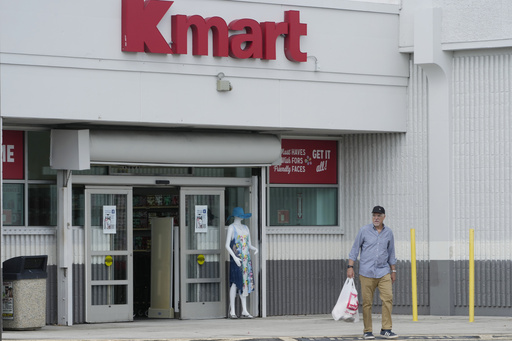
MIAMI — Nestled at the far end of a bustling suburban shopping center in Miami, the last Kmart on the U.S. mainland stands in stark contrast to the booming chain stores surrounding it. Retailers like Marshalls, Hobby Lobby, PetSmart, and Dollar Tree attract a consistent stream of shoppers, while the once-popular Kmart now sits largely overlooked, a relic of the past.
At this dwindling outpost of a store celebrated for its “Blue Light Specials,” only a handful of patrons venture in, often driven by nostalgia or mere curiosity. A recent visitor, Juan de la Madriz, popped in during a trip to purchase dog food at PetSmart. Intrigued by the Kmart’s presence, he hoped to find a gift for his new grandson. Ten minutes later, he left with a stuffed dog and a toy workbench, spending $23. “It will be sad if it closes,” he mused, acknowledging the shift to online shopping.
The closure of the last full-sized Kmart in the 50 states in Long Island, New York marks a significant moment, making the Miami store the only one left operating on the mainland. Once boasting around 2,500 locations three decades ago, Kmart now has just four remaining—three in the U.S. Virgin Islands and one in Guam, plus an online presence. Transformco, the Illinois-based parent company that acquired Kmart and what remains of Sears, has not provided insights about the future of the Miami branch, although there are no indications of an impending closure.
This Kmart, while greatly diminished from its former glory, shows promise akin to a new independent retailer. Traditionally known for its disarray, the Miami location is clean and well-organized, occupying the space once designated for gardening in its early days. A nearby At Home store has taken over much of the original footprint.
A sign just beside the entrance boldly states, “Get it all! Must Haves. Wish Fors. Friendly Faces,” welcoming customers inside. Sparse decorations for Halloween and Christmas adorn the entryway, accompanied by unused shopping carts, while a robotic voice delivers the classic “Welcome” as customers enter. Only a few employees are visible, and a lone shopper examines discounted Halloween candy.
The store houses a modest selection of appliances such as washers and dryers, toiletries, cleaning supplies, a limited toy section, and a range of clothing items. A nostalgic recording still plays over the loudspeaker, announcing sales to an audience that rarely sees the inside.
Kmart’s journey began in 1962 under the S.S. Kresge Co. in Michigan, swiftly rising to prominence by the early 1980s with a lineup of 2,000 stores. Kmart’s vast inventory ranged widely, including everything from clothing and electronics to groceries. However, its decline began during this same decade, as management’s ventures into unrelated retail markets set the stage for its downfall. By the late 1990s, Kmart faced significant financial trouble, culminating in a bankruptcy declaration in 2002 as it fell victim to increasing competition from Walmart and Target.
Issues surrounding its website and blockades in the e-commerce sector allowed Amazon to outpace the brand. Mismanagement and financial scandals further exacerbated its problems, leading to a disastrous acquisition of Sears in 2005. Mark Cohen, a former executive in retail, asserts that Kmart had the potential to thrive had it been steered under competent leadership, pointing to its prime offerings that are still in high demand.
In 2019, Transformco acquired Kmart and Sears out of bankruptcy for $5 billion, with a focus largely on real estate. At the time, 202 Kmart stores remained, but as of now, only the Miami location stands in the contiguous U.S.
Despite nostalgia driving some visitors into the store, sales remain unfazed. On the day de la Madriz visited, foot traffic was minimal at best, with only a handful of customers drifting in intermittently. College students Joey Fernandez and Wilfredo Huayhua entered briefly, hoping for a nostalgic experience, but left empty-handed after commenting on how much smaller the store felt compared to their childhood memories. A teacher named Oliver Sequin, whose nostalgia led him to Kmart while seeking Band-Aids for his son, echoed a similar sentiment, preferring the neatness of the current store despite reminiscing about its once larger presence.
